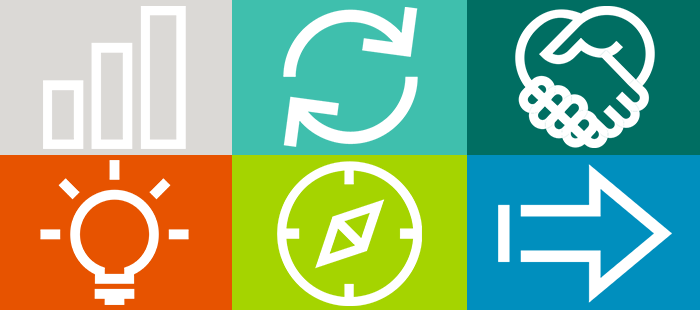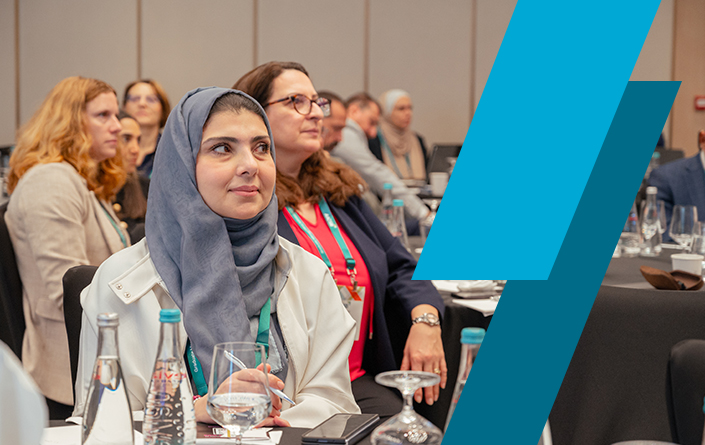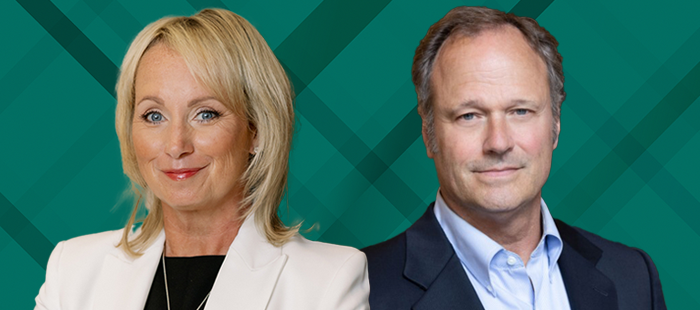What Do Students Really Know About Sustainability?
- Business schools are integrating more sustainability content into their curricula, but often, they are doing so based on assumptions about students’ knowledge and attitudes toward the topic.
- When faculty at BI Norwegian Business School recently surveyed their students, they were surprised to discover that less than one quarter of the students could describe a single United Nations Sustainable Development Goal in specific terms.
- In response to student feedback, BI has revised its curriculum in ways that will require students to engage more frequently with the SDGs and apply sustainable principles in multiple business contexts.
Most business students today care about sustainability, believe in the importance of adopting responsible business practices, and want to see more sustainability content in their courses. But as business schools integrate sustainability into their courses and programs, what assumptions are faculty making about what students know and believe about sustainability and social responsibility in practice?
At BI Norwegian Business School in Oslo, we wanted to discover our own assumptions. Earlier this year, we surveyed 112 students enrolled in Ethics and Sustainability in Organizations, a mandatory six-week MSc course held in the second half of the spring semester. Their responses offered us a clearer understanding of their perspectives, which we are using to tailor our teaching to how students actually view this important topic.
How Do Students Define Sustainability?
In our survey, we asked students questions such as the following to gain a more complete picture of their attitudes:
How would you define the term “sustainable development” in three words? Here, about one-third of students offered future-oriented responses that aligned with the 1987 report from the United Nations’ Brundtland Commission. The report defines sustainable development as “development that meets the needs of the present without compromising the ability of future generations to meet their own needs.” The remaining two-thirds of students placed less emphasis on social conditions and more on the environment; renewable energy; and environmental, social, and governance (ESG) policies.
When you think about the U.N.’s Sustainable Development Goals (SDGs), which goals do you think of first? At BI, we display a large poster featuring the U.N.’s 17 SDGs in public and private spaces throughout our building. Even so, we found that only about half of the students surveyed could refer to terms related to the goals, and less than one quarter could name one specific goal or describe it in exact terms. The majority of those who could name specific SDGs referred to SDG 4 (quality education) and SDG 5 (gender equality).
What do you think is the world’s biggest sustainability challenge? Students’ top answer to this question was climate change, followed by war and waste. In addition, we asked students to rank six sustainability challenges in order of greatest priority. Once again, they ranked climate change first, followed by pollution, food insecurity, resource depletion, loss of biodiversity, and social inequality.
Are you pessimistic or optimistic about the future of sustainable development? Students were evenly split on this question—a finding that is especially important to us as teachers. If half of our students are lacking hope for the future, how can we deliver content in ways that inspire students to imagine positive solutions? We did not ask students why they were optimistic or pessimistic, but we plan to add that question to the survey we conduct next semester.
How well do you think BI integrates sustainability into its curriculum? In 2022 and 2023, BI worked to better integrate the topic into our courses, and we wanted to learn whether students thought we had succeeded. We found that 80 percent of first-year students either strongly agreed, agreed, or somewhat agreed that sustainability was a part of BI’s courses. Now, however, we must continuously update our curriculum to reflect the rapidly changing world.
If half of our students are lacking hope for the future, how can we deliver content in ways that inspire students to imagine positive solutions?
How can we do a better job at integrating sustainability at BI? We received a range of answers to this question. Students recommended that we put “more focus on coming up with actual sustainable solutions for real companies,” offer a “view of both sides, both negative and positive,” and provide “more concrete examples.”
Their most common request was that we integrate more examples of successful sustainability practices into the curriculum. With their feedback in mind, this upcoming semester we are including more relevant examples in our courses. On top of that, we will use more mini case studies, particularly from IMD, which students will then discuss in groups.
Students also suggested that we put more emphasis on the basics and cover issues currently in the news. In our own observations, we also have noticed that students are particularly engaged with assignments that focus on debates they have had in previous classes. Therefore, in Ethics and Sustainability, students are required to write two well-informed opinion essays on an assigned topic for the final exam. There are no right or wrong perspectives—rather, assessments are based on their critical analyses.
For example, two semesters back, a debate was underway in Norway about whether to open the continental shelf to deep sea mining. On the final exam, we asked students to pick a country and write an argument about whether its government should ban or allow deep sea mining, discussing the tradeoffs involved. After the course, many students told us how much they liked the final exam question. They noted that it helped them understand the public debate in a completely new light and showed them how they might engage in debate with others on the topic.
It was students’ positive feedback on this teaching experiment that shaped the way we designed exam questions going forward. Their feedback also prompted us to encourage and require students to read and reference more primary sources. Before, for instance, we would ask students simply to read about the Paris Agreement. Now, we ask them to read the Paris Agreement, think about its benefits and shortcomings, and develop and argue for solutions they believe in. Knowing the value of this approach has been especially useful for faculty who teach courses that focus on sustainability.
Reflecting on the Results
Every semester, the faculty involved in teaching the sustainability component of the Ethics and Sustainability in Organizations course meet to discuss what worked, what did not work, and what we should consider adjusting for the next semester. These discussions cover not only how we might improve course content, but also how we can continuously improve course delivery by experimenting with different teaching and assessment approaches.
Our survey, along with other student feedback, has been instrumental in helping us question our assumptions and has inspired us to make some substantive changes for the upcoming fall semester. For example, we took note of the fact that students ranked climate change as the biggest sustainability challenge both globally and locally. Is this why students feel pessimistic about the future of sustainable development? Do they view the challenge as too big for a solution? This reflection led to new questions about how we can overcome students’ pessimism and help them see sustainability in context beyond climate-focused issues.
For example, even though BI’s faculty align sustainability content with the SDGs, few faculty connect the topics explicitly to the SDGs in course descriptions or in the classroom. In an internal mapping of our curriculum, we found that more than 50 percent of our courses integrate SDG topics, but only 6 percent explicitly mention the SDGs. How can we ensure that students apply sustainability concepts to all that they learn, even if not explicitly instructed to do so?
In other words, how do we teach them to recognize sustainability content in their other classes even if we do not tag that content directly to terms such as sustainability, green business, and ESG issues in the syllabus? If faculty teaching a strategy course use a case study on an African agritech startup without calling it an ESG case, will students still connect it to the relevant SDGs?
We must train students to think in terms of sustainability, responsibility, and societal impact even when these terms are not directly mentioned in course content.
Our survey question on the SDGs offered us some initial insights. Yes, BI students are familiar with the SDGs, but if less than a quarter of the students can describe the specific focus of a single SDG number (for example, that SDG 13 relates to climate change), it signals to us that these goals are not in their working memory. It tells us that students have not deeply engaged with the framework. Have we been incorrectly assuming that students are taking the opportunities available to apply the SDGs in business contexts? We will find out in the upcoming semester, when we will spend more time in class having students actively engage with the SDGs.
We spent the early part of this summer evaluating different SDG tools and projects, determining which would best allow students to work hands-on with and actively apply the SDGs in a business case. Our hypothesis is that this deeper engagement will help students not only see how the SDGs apply to real-world business contexts, but also recognize sustainability content in their subsequent courses—and, eventually, in the workplace.
Creating a Ripple Effect
We realize that current trends of unsustainable development have stemmed, at least in part, from many of the theories that have long been taught in business and economics courses. These theories have led businesses to focus on economic growth over societal welfare and to measure their success in terms of their gross national product rather than sustainable progress. If we want to reverse that trend, we must diverge from “business education as usual” and prepare students for a future that is yet unknown to us.
For this to happen, we must do more than include words such as “environment” and “sustainability” in our course descriptions. We must train students to think in terms of sustainability, responsibility, and societal impact even when these terms are not directly mentioned in course content.
We realize that what students say they want is not necessarily what will help them learn the most—or what they most need to learn. That said, our survey’s results provide a valuable window into students’ understanding of and attitudes about sustainable development.
Over the next semester, we are interested to see if the minor changes we have made in Ethics and Sustainability will have a ripple effect throughout students’ studies. In the future, we plan to conduct a slightly revised survey, so that we can gain insights into each incoming class. We also plan to design a short exit survey to see whether we are achieving our intended objectives.
As sustainability becomes even more important to business, we offer the following suggestions to other business schools and faculty: Question your assumptions. Experiment with your teaching, measure the effects of each approach, and adjust as necessary. Finally, maintain strong connections with practitioners so that you not only know what is happening in the real world today, but also can anticipate what competencies students will need in the future.
As educators, we must all be critical and teach our students to be critical. We need to ask students tough questions, have them struggle to understand the big picture, and let them reach their own conclusions. Through this process, they will develop systems thinking, a skill they will need as they tackle the world’s biggest problems.
Most importantly, instead of preaching sustainability, we need to foster students’ ability to cultivate informed opinions, understand opposing perspectives, and remain optimistic about future possibilities. Students need to discuss sustainability challenges in different fora—not just in dedicated sustainability courses or modules. They must be ready to confront sustainability issues in every relevant business context.
Educators who would like to read or replicate our survey can contact [email protected].






